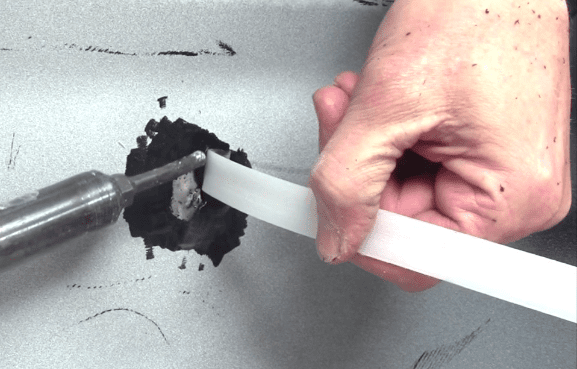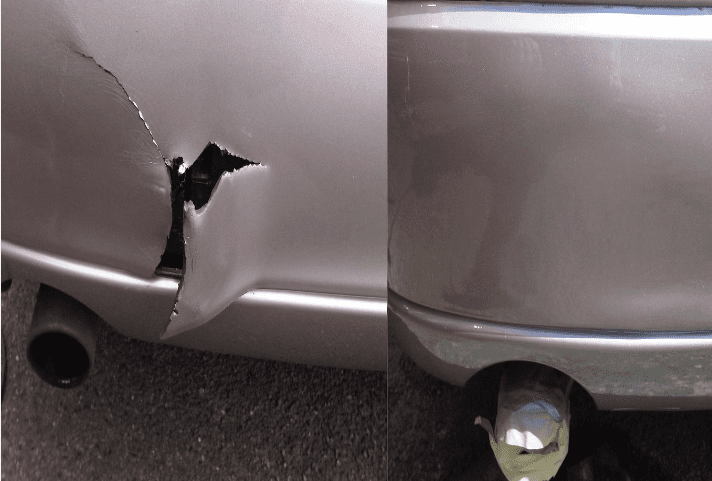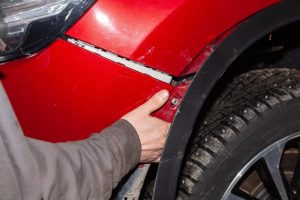how to repair hole in plastic car bumper – If you’ve found yourself with a hole in your plastic car bumper, don’t worry – you’re not alone. Accidents happen, but the good news is that you can tackle this repair yourself with a bit of know-how and the right tools. In this comprehensive guide, we’ll walk you through the steps on how to repair a hole in a plastic car bumper, ensuring your vehicle looks as good as new.
Understanding the Damage and how to repair hole in plastic car bumper
Before diving into the repair process, it’s crucial to assess the extent of the damage. Is the hole small or more significant? Understanding the size and depth of the hole will help determine the appropriate repair method.
Materials You’ll Need for “how to repair hole in plastic car bumper”
- Epoxy Putty: An excellent choice for repairing plastic, epoxy putty provides a strong and durable bond.
- Sandpaper: To smooth the repaired area and create a seamless finish.
- Cleaning Solvent: Ensures the bumper surface is free from dirt and contaminants.
- Primer and Paint: Match the color of your car for a flawless final result.
- Plastic Mesh or Patch: For reinforcing the repair and providing additional strength.
Step-by-Step Repair Guide – how to repair hole in plastic car bumper?
1. Clean the Area:
Use a cleaning solvent to thoroughly clean the area around the hole. This ensures proper adhesion and a clean surface for the repair.
2. Trim Any Loose Plastic:
Trim away any loose or jagged plastic around the hole using a utility knife. This prepares the area for repair and prevents the hole from enlarging.
3. Sand the Surface:
Gently sand the area around the hole to create a textured surface. This helps the epoxy adhere more effectively, ensuring a robust bond.
4. Apply Epoxy Putty:
Knead the epoxy putty according to the manufacturer’s instructions. Press it firmly into the hole, ensuring it fills the gap completely. Smooth the surface with a putty knife for an even finish.
5. Reinforce with Mesh:
For added strength, place a piece of plastic mesh or patch over the epoxy putty while it’s still pliable. Press it down gently to embed it in the epoxy.
6. Allow to Cure:
Let the epoxy putty cure completely. This may take a few hours, depending on the product used. Ensure it’s fully hardened before proceeding to the next step.
Remove Scratches From Black Plastic Bumper? Step-By-Step Process
7. Sand and Shape:
Once the epoxy is cured, use fine-grit sandpaper to smooth the repaired area. Shape it to match the contours of the bumper, creating a seamless blend.
8. Apply Primer:
Apply a thin coat of primer to the repaired area. This helps the paint adhere better and ensures a more uniform finish.
9. Paint the Bumper:
Match the paint to your car’s color and carefully apply it to the repaired section. Follow the manufacturer’s guidelines for drying times between coats.
10. Final Inspection:
After the paint has dried, inspect the repair closely. Ensure it blends seamlessly with the rest of the bumper, and make any necessary touch-ups.

Tips for Success – how to repair hole in plastic car bumper
- Work in a well-ventilated area when using cleaning solvents, primers, and paints.
- Follow the manufacturer’s instructions for each product used.
- Take your time during the curing process to ensure a strong and durable repair.
when I need to repair the hole in a plastic car bumper at an auto body repair
here are some situations where you should consider repairing a hole in your plastic car bumper at an auto body shop:
1. Extent of Damage: If the hole is large or deep, or if there are multiple holes in the bumper, DIY repairs may not be strong enough to withstand the wear and tear of everyday driving. Professional auto body shops have the expertise and equipment to use stronger materials and methods to repair extensive damage.
2. Material Compatibility: If your bumper is made of a material other than ABS plastic, such as metal or fiberglass, DIY repairs with epoxy may not be effective. Auto body shops have access to specialized materials and techniques for repairing different bumper materials.
3. Complexity of Repair: Some bumper repairs, such as repairing brackets or mounting points, require specialized tools and techniques that are not available to the average DIYer. Auto body shops have the experience and expertise to handle these complex repairs safely and effectively.
4. Lack of Experience: If you are not comfortable with DIY repairs or do not have experience with epoxy applications, it is best to seek professional help to avoid mistakes that could worsen the damage or make the repair less effective. Auto body technicians have the training and experience to handle a variety of bumper repair scenarios.
5. Underside Bumper Repair: The underside of a car bumper is exposed to road debris and harsh weather conditions, making it more prone to damage. DIY repairs with epoxy may not be durable enough for the underside of the bumper. Auto body shops can recommend the most appropriate repair method for the underside.
6. Time Constraints: If you are short on time or do not have the necessary tools and materials, it is more efficient to have a professional repair the hole in your plastic car bumper. Auto body shops have the resources and experience to complete bumper repairs quickly and effectively.

Conclusion for “how to repair hole in plastic car bumper”
Repairing a hole in a plastic car bumper might seem daunting, but with the right materials and step-by-step approach, it’s a task you can tackle successfully. By following this guide on how to repair a hole in a plastic car bumper, you’ll not only save money on professional repairs but also take pride in restoring your vehicle’s appearance.





